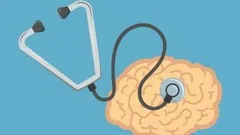
Light Spike and Sight: The Neuroscience of Vision 
The neuroscience of vision is a complex process that involves the focusing of light onto the back of the eye and the translation of this into meaningful nerve signals. The retina and visual cortex are key components in this process, as they are responsible for the interpretation of the signals and the formation of an image. This course explores the intricate workings of the eye and brain to understand how vision is achieved. ▼
ADVERTISEMENT
Course Feature
![]() Cost:
Cost:
Paid
![]() Provider:
Provider:
Edx
![]() Certificate:
Certificate:
No Information
![]() Language:
Language:
English
![]() Start Date:
Start Date:
18th Nov, 2014
Course Overview
❗The content presented here is sourced directly from Edx platform. For comprehensive course details, including enrollment information, simply click on the 'Go to class' link on our website.
Updated in [March 06th, 2023]
This course, Light Spike and Sight: The Neuroscience of Vision, provides an overview of the complex process of vision. It begins with the physics of focusing light onto the retina and progresses to the processing of colors, form, and motion. Finally, it covers the interpretation of visual information in the cortex. Through a series of thematic, animated videos, the mysteries of the visual system are explored and the journey through the eye, retina and brain is revealed. By the end of the course, participants will have a better understanding of the neuroscience of vision and how it affects the way we see the world.
[Applications]
After taking this course, students should be able to apply the knowledge they have gained to better understand the neuroscience of vision. They should be able to explain the physics of light and how it is focused onto the retina, as well as the processing of colors, form, and motion. Additionally, they should be able to interpret visual information in the cortex and understand the mysteries of the visual system.
[Career Paths]
1. Optometrist: Optometrists are healthcare professionals who specialize in the diagnosis and treatment of vision problems. They use a variety of tests and instruments to assess a patient's vision and prescribe corrective lenses or other treatments. Optometrists are also involved in the prevention and management of eye diseases, such as glaucoma and macular degeneration. With the increasing prevalence of digital devices, optometrists are also playing an important role in helping people manage the effects of digital eye strain.
2. Ophthalmologist: Ophthalmologists are medical doctors who specialize in the diagnosis and treatment of eye diseases and disorders. They are trained to perform eye exams, diagnose and treat eye diseases, and perform eye surgery. Ophthalmologists are also involved in the research and development of new treatments and technologies for eye care.
3. Vision Scientist: Vision scientists are researchers who study the visual system and its components. They use a variety of techniques, such as imaging, electrophysiology, and psychophysics, to investigate the structure and function of the eye, retina, and visual cortex. Vision scientists are also involved in the development of new technologies and treatments for vision-related disorders.
4. Vision Rehabilitation Therapist: Vision rehabilitation therapists are healthcare professionals who specialize in helping people with vision impairments to maximize their functional vision. They use a variety of techniques, such as orientation and mobility training, low vision rehabilitation, and assistive technology, to help people with vision impairments to live independently. With the increasing prevalence of vision impairments, vision rehabilitation therapists are playing an important role in helping people with vision impairments to lead full and productive lives.
[Education Paths]
1. Neuroscience Degree: A neuroscience degree is a great way to explore the mysteries of the visual system. Students will learn about the anatomy and physiology of the eye, the structure and function of the retina, and the processing of visual information in the brain. They will also gain an understanding of the latest research and developments in the field, and the implications for clinical practice.
2. Optometry Degree: An optometry degree is a great way to gain a deeper understanding of the physics of light and how it is focused onto the retina. Students will learn about the anatomy and physiology of the eye, the structure and function of the retina, and the physics of light. They will also gain an understanding of the latest research and developments in the field, and the implications for clinical practice.
3. Computer Science Degree: A computer science degree is a great way to explore the use of technology to simulate and analyze the visual system. Students will learn about the principles of computer vision, the development of algorithms to process visual information, and the use of artificial intelligence to interpret visual data. They will also gain an understanding of the latest research and developments in the field, and the implications for clinical practice.
4. Psychology Degree: A psychology degree is a great way to explore the cognitive aspects of vision. Students will learn about the psychological processes involved in perceiving and interpreting visual information, the development of visual perception in children, and the effects of visual impairment on behavior. They will also gain an understanding of the latest research and developments in the field, and the implications for clinical practice.
Course Provider

Provider Edx's Stats at AZClass
Light Spike and Sight: The Neuroscience of Vision is an excellent course for learners to explore the complex and fascinating world of vision. It covers the physics of light, the anatomy of the eye, and the processing of visual information in the brain. Learners will understand the complex mechanisms of the visual system, from the optics that focus light onto the retina to the interpretation of visual information in the cortex. They will also study visual neuroscience, including the structure and function of the retina and visual cortex, and the processing of colour, form and motion.
Discussion and Reviews
0.0 (Based on 0 reviews)
Explore Similar Online Courses

Preparing for Google Cloud Certification: Cloud Developer

Constitution Of India And Environmental Governance: Administrative And Adjudicatory Process

Python for Informatics: Exploring Information

Social Network Analysis

Introduction to Systematic Review and Meta-Analysis

The Analytics Edge

DCO042 - Python For Informatics

Causal Diagrams: Draw Your Assumptions Before Your Conclusions

Whole genome sequencing of bacterial genomes - tools and applications

Control Your Subconscious Mind: Neuroscience Hidden Secrets

Perform an Excellent Neurological Bedside Exam


Start your review of Light Spike and Sight: The Neuroscience of Vision